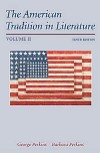Like his counterpart, James Baldwin, novelist and short story author John Cheever dates his desire to become a writer to the age of 12. Born and raised in Quincy, Massachusetts, Cheever published his first short story, "Expelled," at the age of 18, following his expulsion for smoking at Thayer Academy. Throughout his works, Cheever draws heavily on his own and the experiences of his family as the stimulus for his imaginative though often dark analyses of urban America. At one time a well-off shoe manufacturer, John Cheever's father lost his business in the stock market crash of 1929, and thereafter he abandoned the family and attempted suicide. His mother picked up the challenge of the family's well-being, opening a gift shop to help make ends meet. The Wapshot Chronicle (1957) and The Wapshot Scandal (1964) reflect something of his own background. Other works address other themes in modern America, ranging from fratricide and homosexuality in Falconer (1977) to suburban evil in Bullet Park (1969). Other notable works include Cheever's Some People Live: A Book of Stories (1943), The Enormous Radio and Other Stories (1953), The Housebreaker of Shady Hill and Other Stories (1958), Some People, Places, and Things That Will Not Appear in My Next Novel (1961), The Brigadier and the Golf Widow (1964), and The World of Apples (1973). A retrospective collection, The Stories of John Cheever, appeared in 1978. John Cheever received limited but nevertheless significant acclaim during his long career as one of America's foremost authors of the twentieth century. Featured once on the cover of Time Magazine, he received enthusiastic critical attention from his peers and was selected for the prestigious Academy of Arts and Letters "William Dean Howells Award" for fictional achievement, presented to him in 1965 by Ralph Ellison. |



 2003 McGraw-Hill Higher Education
2003 McGraw-Hill Higher Education